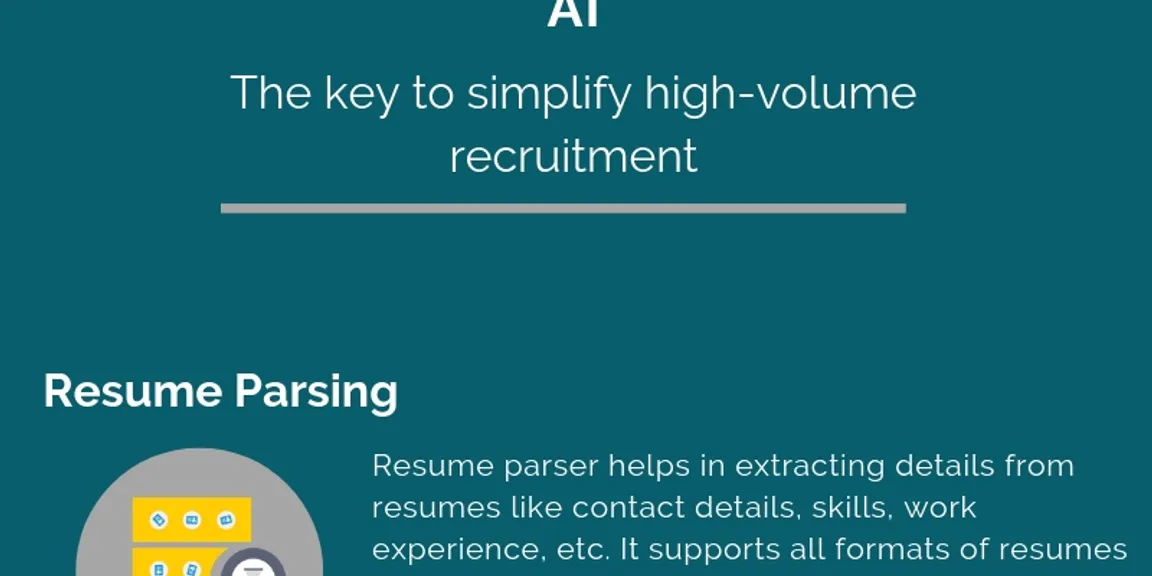

Automate your high-volume recruiting with AI and Automation?
AI and automation have played a vital role in reshaping the concept of high-volume recruiting. New technological innovations have simplified the recruitment process and changed the way HR professionals handle the recruitment process.
AI and automation have played a vital role in reshaping the concept of high-volume recruiting. New technological innovations have simplified the recruitment process and changed the way HR professionals handle the recruitment process. The high-volume recruitment involves hiring a large volume of employees in a short amount of time. Hiring any mass number of employees at a time is challenging no matter how big of an organization you are.
Whether you are hiring a single candidate or a large number of candidates, HR professionals want to sure they are placing the right candidates for an open job position. When an organization is getting hundreds or thousands of applicants for an open job position, it can seem very difficult to find the right fit for an organization.
Before you move towards the latest recruitment trends, imagine how was the days with manual resume screening and bulk phone interviews. With the help of technology HR professionals can make more intelligent candidate selection in a short period. Technology has changed the way you attract, scrutinize, and get to know potential candidates, which helps to make sure you are connecting with the most eligible talent for appropriate positions at the right time.
The challenges of high-volume recruiting:
1) Restriction of time:
On average, a single job opening receives hundreds of applications. So, imagine if an organization is trying to fill twenty, thirty or hundreds of vacant job openings. No matter how large an organization’s HR team size is, it will be difficult to handle too many applications and merely impossible with the traditional recruitment process.
2) Team size:
It is pressure on recruiters to find the right fit, who will create a positive impact on the growth of an organization. This process usually involves getting to know each candidate to see how they might fit with the qualifications, expectations and the growth of an organization. If the recruitment team is small, it will be far complicated for them to know each one individually.
3) Cost of hire:
Screening, scrutinize, and interviewing takes time as well as money. It not only involves the salary of the candidate, but the cost of a job posting, reviewing applications, and screening-eligible candidates.
4) Arranged systematically:
If HR professional is hiring a single candidate, it is easy to keep track of him/her in the recruitment process. But it will be difficult for hundreds of applicants to keep track of resumes, communication, and interview time of each. It would be possible to miss a few potential candidates from these many potential hires.
5) Candidate experience:
Recruitment is a two-way process. It would be likely that a candidate might be interested initially but lose interest in poor communication in-between the process. Candidate experience usually involves clear communication throughout the recruiting process.
How to overcome high-volume recruiting challenges with the help of Technology:

Automate your high-volume recruitment
1) Resume parser:
Resume parser tool helps in extracting information from resumes (screening resumes) including skills, work experience, contact details, etc. It supports all resume formats like PDF, Doc, Docx. It parses resumes in bulk with a fraction of time and saves recruiters time on manual intervention.
2) Chatbots:
Attracting potential candidates is an essential step in building a successful recruiting process. It uses AI, which makes chatbots smarter and feels their conversation natural. Chatbots can communicate with candidates, and recruiters can use that data to find the most potential candidates.
3) Video interviews:
Video interview technology can enhance candidate search and streamline the bulk screening process. It makes easier to spot top talent and interact easily with them in a more meaningful way. It helps in freeing HR professionals’ valuable time while keeping the cost down.



